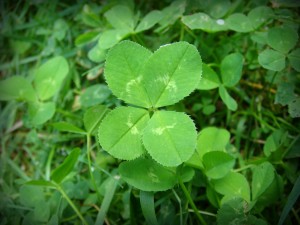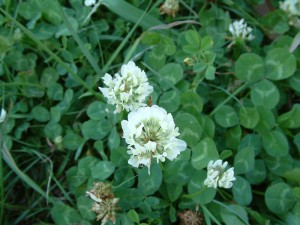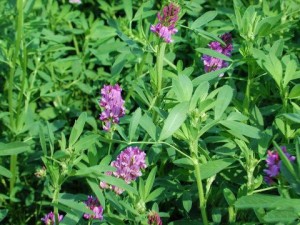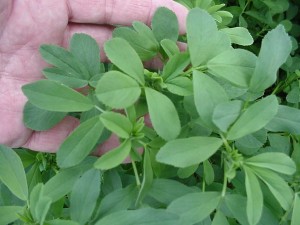While surprising, those luck clovers are actually edible; and the best part is they’re found just about everywhere there’s an open grassy area. And while there are few pastures in the Arctic, clover grows from the top of the earth to the bottom and all around, nearly every location on the rotation. You can spot them by their distinctive trefoil leaflets. You can eat clovers raw, but they taste better boiled.
One of the more surprising sides of clover is that it’s in the pea family, and its blossom is actually a bunch of little pea-like blossoms, called “wings and keels.” Clover is also a native of Europe and western Asia and has been used as a pasture crop worldwide because of its thick growth and abundance of nutrients. Though well-known as totally edible, from blossom to root, it is not choice “eating wild.” Some call it a survival food, and perhaps rightly so for only the blossoms are truly pleasant to human tastes. The leaves are an acquired or tolerated taste.
In reference to the blossoms, don’t select brown ones. You want young and fresh whether white or pink or red though white clover is the better tasting of them all. Besides directly eating the parts of the plant, tea can be made by pan roasting the blossoms until nice and crispy. The leaves are another matter. Young ones are digestible raw in small amounts, half a cup or so. Older leaves should be cooked, but you’d have to be hungry to eat them. It is a survival or famine food.
While it may not be that good in taste, clover can be good for you. It is high in protein, has beta carotene, vitamin C, most of the B vitamins, biotin, choline, inositol, and bioflavonoids. Clover does come with three words of warning, however: One is that quite a few people are allergic to it and don’t know it, so go easy at first until you know one way or the other. Secondly, never ferment and eat any part of it. You want your clover either completely fresh or completely dried, Never in between. Lastly clover in warm climates can produce small amounts of cyanide (please read my article on apricot pits if you have concerns).
Red clover does have phyto estrogens and pregnant or nursing women do need to be careful – but the studies done on animals had the animals taking *large amounts* of red clover. I would be much much more concerned with a woman’s consumption of soy and soy products during pregnancy than a fresh red clover or even a red clover supplement.
While alfalfa is a clover and part of the pea family it is also an herb. People use the leaves, sprouts, and seeds to make medicine. Alfalfa is used for kidney conditions, bladder and prostate conditions, and to increase urine flow. It is also used for high cholesterol, asthma, osteoarthritis, rheumatoid arthritis, diabetes, upset stomach, and a bleeding disorder called thrombocytopenic purpura. People also take alfalfa as a source of vitamins A, C, E, and K4; and minerals calcium, potassium, phosphorous, and iron.
Jon
As usual, here are my resources for additional reading:
http://www.artofmanliness.com/2010/10/06/surviving-in-the-wild-19-common-edible-plants/
http://www.eattheweeds.com/clover-available-around-the-world-2/
http://www.webmd.com/vitamins-supplements/ingredientmono-19-ALFALFA.aspx?activeIngredientId=19&activeIngredientName=ALFALFA







Leave a Reply